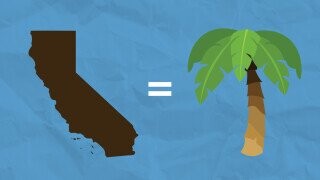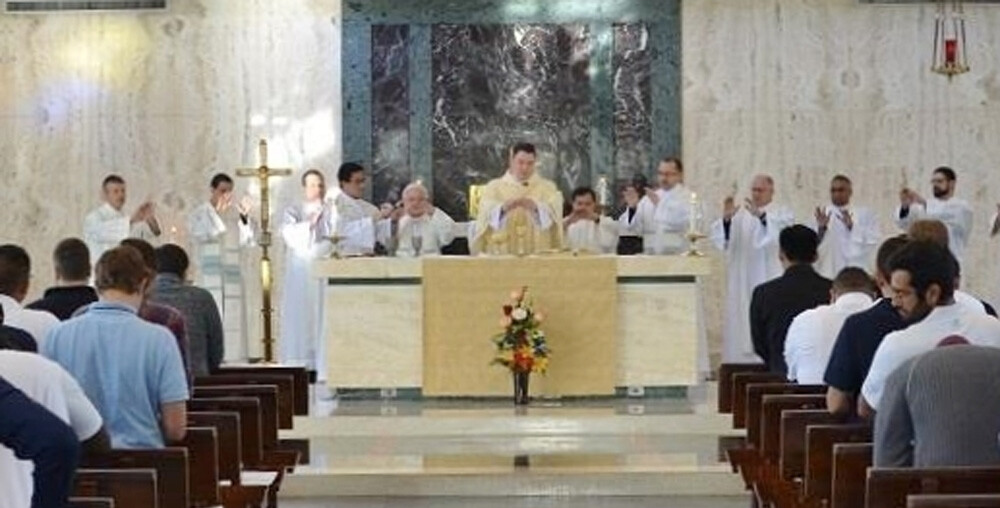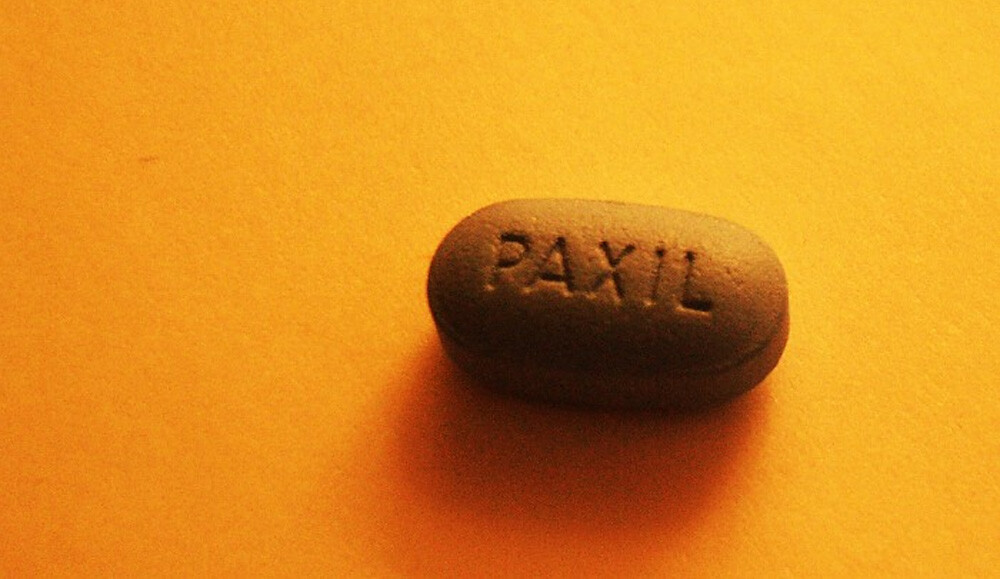5 Unquestioned Traditions We Only Have Because of Marketing Campaigns

An ad man named Don Draper once said that love, as we know it, doesn’t really exist. “What you call love,” he said, “was invented by guys like me to sell nylons.” Maybe he was wrong about that. But you know what definitely doesn’t really exist? Don Draper. He was invented by guys like me (writers) to sell TV subscriptions.
Now, imagine the day comes that people forget exactly from where Don Draper originated. Let’s further imagine that despite forgetting Mad Men was a show, people go on throwing “Mad Men Parties,” in which they wear sharkskin suits and bell-sleeve minidresses. They don’t even know they’re hearkening back to the 1960s — they just think that this is the attire of Mad Men Parties, a type of festival that has always existed.
Don't Miss
Sounds ridiculous, but that’s how lots of stuff gets ingrained into culture. It starts as some kind of promotion, till one day no one remembers the campaign; they just remember the tradition. That’s how we got stuck with stuff like...
Los Angeles Palm Trees
Palm trees are the symbol of California, and of L.A. in particular. Even if you’ve never been there yourself, you’ll still picture montages of palm trees in TV shows, from whenever a character arrives in Los Angeles. TV shows like Mad Men, for example. Or, here’s how Beverly Hills 90210 introduced simple ’90s folk to Los Angeles County (and ensured that everyone worldwide was able to name at least one American zip code):

Fox
When you see palm trees lining a boulevard, they obviously didn’t grow that way on their own. The city laid them out. So, there’s obviously something artificial about any display of palm trees like this. The Angeleno palm tree conspiracy runs deeper than that, however.
The palm tree isn’t native to Los Angeles at all. California has a few native palms far out in the desert, but the ones you see in Los Angeles were introduced from far away. The first of these trees came in the 18th century, planted by Spanish missionaries. Their motive appeared to be religious: They were thinking of the palms in the Holy Land.

That’s not why the city has so many trees, though. We got those thanks to a dedicated effort in the 1930s, which aimed to give Los Angeles a reputation as not a desert town but a desert oasis. The city planted tens of thousands of palm trees in just a couple years, in a program that put back to work plenty of people otherwise screwed thanks to the Great Depression.
Along with a general marketing push for the city, the trees served a more specific purpose: prettying the place up before the 1932 Olympics. So, take pride in your palm trees, people of Los Angeles. They’re as much a part of your city as the lick of paint Qatar threw over Doha ahead of last year’s World Cup.
Cinco De Mayo
The fifth of May was the date that Mexico won the Battle of Puebla in 1862. France invaded, and when they reached the capital, the Mexicans prayed for rain that would slow the French down. It did rain, but this proved unnecessary. The French approached more-or-less in single file, so the Mexicans were able to easily tear their way through them as they arrived. In fact, the only reason Mexico didn’t totally destroy the retreating French army afterward was that the Mexican soldiers themselves got stuck in the mud, thanks to all the rain.

The city of Puebla remembers this victory to this day. It’s not really a huge deal in Mexico overall, though. It was cool to beat France, but France came back to Puebla the next year, and that time, they won and gained control over the whole country. If you thought Cinco de Mayo was Mexico’s Independence Day, nope, it’s not (they have one, but it’s a whole other day). Cinco de Mayo isn’t a holiday in most of Mexico. It’s an American celebration.
Mexican-Americans celebrated Cinco de Mayo in the middle of the 20th century. It was a good way of linking Mexican and American identities because France, when it was invading Mexico, was also backing the Confederates, so a victory for Mexico was also a victory for the Union. The holiday really became huge, however, starting at the end of the 1980s. A Texas company called the Gambrinus Group launched a campaign to promote Cinco de Mayo, to get people to drink Mexican alcohol. The Gambrinus Group was the importer for Corona beer.

Universal Pictures
Corona took up the marketing push during the next decade, and boy did it succeed. Americans now buy more beer for Cinco de Mayo than for the Super Bowl. More even than for St. Patrick’s Day — a holiday that grew thanks to Irish-American organizations but not thanks to any specific beer company claiming it, which was a real missed opportunity.
Christmas Poinsettias
So, Cinco de Mayo’s not so Mexican. You know what is Mexican, though? Poinsettias, the plant we all associate with Christmas.
We associate quite a few evergreen plants with Christmas. Holly and ivy were part of winter festivals older than Christmas, representing the masculine and the feminine. Christmas went on to use them too, now assigning wreaths symbolism related to Jesus’ blood and crown of thorns. Mistletoe was a part of Christmas starting in the Middle Ages, representing life and fertility. But no Christmas revelers back then turned to poinsettias, since the poinsettia is a New World plant.

ABC
We reached the 20th century without thinking there was anything particularly Christmassy about poinsettias. We only made the connection thanks to one family who marketed poinsettias, the Eckes.
The Eckes, originally from Germany, sold fruits and vegetables in California, and also a few flowers. They realized the poinsettia (named after Joel Poinsett, who introduced it to the U.S. from Mexico in 1820) is one of the few flowers to bloom in the winter. Albert Ecke dubbed it the “Christmas flower.” Conveniently, the plant was red and green. Not too many other people were trying to sell it, so 90 percent of all poinsettias bought in America came from the Eckes.
A couple generations later, Paul Ecke kicked up the marketing several notches. In the 1960s, he sent free poinsettias to various TV networks to use in their Christmas specials. These broadcasts strongly influenced families when planning their own Christmases. People’s other source for Christmas tips was magazines, and Ecke went after them too, pushing his poinsettia into their annual Christmas shoots — which was challenging, because it turned out magazines shoot those in the summer, but he made it work.

The tradition grew from there. Poinsettias are today an established Christmas tradition, and the Eckes still control 70 percent of the American market, as well as 50 percent of the worldwide market. They’re now the bestselling potting plant in America, even though (or because) people almost entirely buy it around Christmas, and even though smoking the leaves totally fails to get you high (we heard).
Social Anxiety
People have always been anxious. No one stood up one day and said, “I’ve invented a new emotion called anxiety.” There’s even a prayer going back 2,000 years, and still said today in churches, which goes like this: “Keep us free from sin and protect us from all anxiety as we wait in joyful hope for the coming of our savior, Jesus Christ.”

Let’s zero in, however, on anxiety as a specific mental disorder. We mean social anxiety disorder, one of two different mental conditions to receive the fitting acronym SAD. Social anxiety, in a short time, exploded in the public consciousness. No, we’re not talking about the documented rise in everyone’s emotional distress over the last 15 years or so. Nor are we talking about the acceptance of social anxiety disorder by the psychiatric community, who stuck it in their DSM manual back in 1980. We’re talking exclusively about what happened in 1999.
In 1999, the media suddenly began talking about social anxiety, and normal people resultantly started talking about it, too. That year, the FDA had approved a new medication to treat social anxiety, called Paxil. But new medications get approved all the time without news coverage. The media really jumped on social anxiety disorder and Paxil because they were pushed to by a PR company, Cohn & Wolfe, who had been hired by the maker of Paxil, Glaxo SmithKline.

Thanks to the PR campaign, media mentions of social anxiety went from 50 a year in 1997 or 1998 to over a billion in 1999. Again, the media were responding to something new that had happened, but the existence of one more antidepressant, similar chemically to existing antidepressants, wasn’t necessarily something everyone needed to know about. For most people who are socially anxious, popping pills is less effective than just learning to be less awkward by talking stuff out.
Paxil isn’t a quack remedy or a placebo. It’s an SSRI, and it treats such conditions as OCD and PTSD. But the marketers correctly guessed that the real money lay in getting people worried about SAD, and that’s altogether too many abbreviations for one paragraph.
Trucker Culture
We see truckers as freeway cowboys, riding 18-wheelers across the country in a job that offers more independence than working for a boss man. This image somewhat misunderstands just what trucking really is, but it’s a strong one, ingrained in our culture thanks to a string of trucker movies that came out in the late 1970s. We had Henry Fonda in The Great Smokey Roadblock, Chuck Norris in Breaker! Breaker! and of course Burt Reynolds in Smokey and the Bandit. This trucker trend in pop culture resulted from the popularity of the 1975 song “Convoy,” which also got its own film adaptation.
The song was credited to C.W. McCall, who sounds like a genuine trucker himself. He was not a trucker, and his name was not C.W. McCall. His name was William Dale Fries Jr., and he was an ad executive at the firm Bozell & Jacobs. When “Convoy” came out, he’d had that advertising job for 14 years. C.W. McCall was a character that Fries created, for an advertising campaign.
The campaign didn’t advertise trucking. It advertised bread. Fries was tasked with promoting Old Home Bread, so he came up with a series of commercials featuring a trucker, C.W. McCall. “C.W.” stood for country and western, and “McCall” came from an issue of McCall’s magazine he saw on his desk. In the ads, narrated by Fries in a trucker voice, McCall trucked Old Home bread and fell in love with a waitress. The campaign won him a Clio, an advertising award you might know from Mad Men, that touchstone we keep returning to.
Fries died exactly one year ago today, on April 1, 2022. At the end of his life, “Convoy” made a comeback, now as an anthem for the Freedom Convoy, those Canadian truckers protesting vaccine mandates. Fries said he was cool with this framing of the song. Not because he felt strongly about the protesters’ cause (he himself was vaccinated). It was because, said the ad man, “Anything they wanna do with it, they gotta pay royalties.”
Follow Ryan Menezes on Twitter for more stuff no one should see.